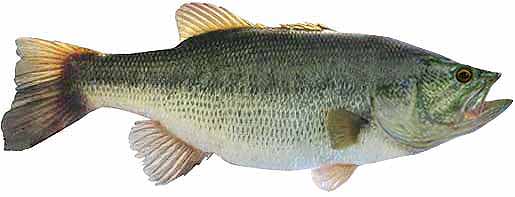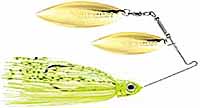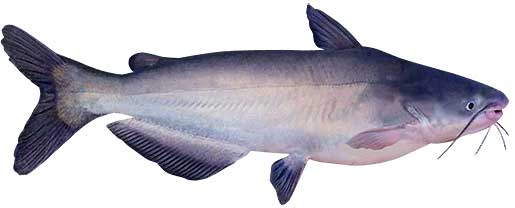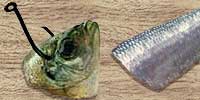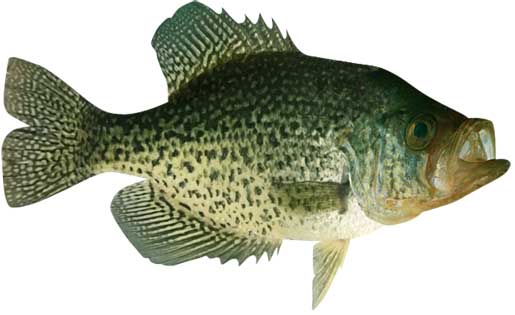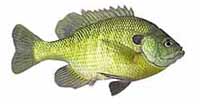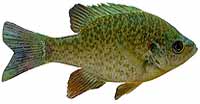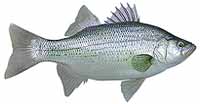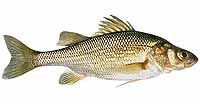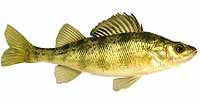Fishing Report For Lake Tillery, NC
By Rick Seaman
Last updated on .
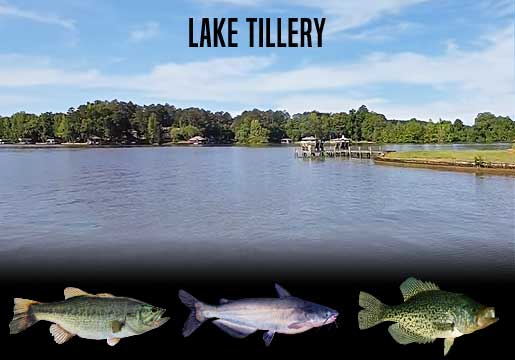
Fishing Reports
Popular Fish Species Lake Tillery, NC
Largemouth Bass
Current Report: Good
The grass and docks on Lake Tillery are loaded with bass, and locals report catching them on a wide variety of lures from Texas-style worms and jigs to reaction lures like crankbaits and jerkbaits.
FALL. Now that Fall is in full swing, bass here are following schools of baitfish out of coves and bays into 15 to 30 feet of water. Currently topwater, jerkbaits, crankbaits, and slow-rolled spinnerbaits are catching most of the bass. Later in Fall, as deeper water cools, bait and bass move out to ledges, channel edges, points and humps where flutter spoons, jigs and drop shots are often good choices in 8 to 20 feet of water.
WINTER. Winter will isolate largemouth around slightly deeper structure, flats, points and creek channels. They can be found from 10 to 40 feet deep. Here they hold, feeding less frequently, awaiting warmer water to return in Spring. Slow presentations are key to getting bites. On warmer days, especially during late afternoons, bass may move into 6 to 12 feet of water to feed.
SPRING. Once water temperatures rise into the low 60's, largemouth will move from deep wintering holes, to shallower water nearby spawning areas. Good choices include the points around Cook’s Marina, upper coves off the Norwood Beach area, around Lilly’s Bridge, and sheltered coves around the Lilly Cemetery. Anglers report good topwater action from mid Spring through Summer, especially early in the morning, and on cloudy days. Vibrating jigs, jerkbaits and spinnerbaits typically get bites just away from the shoreline. At this time they are feeding aggressively in about 2 to 12 feet of water, and preparing for the spawn. Once water warms into the mid to high 60's, they will move into 2 to 5 feet of water, and create nests, then lay their eggs. Immediately afterwards, females move to deeper water and males remain to guard the eggs, and then the fry. After a couple weeks, the males also move to slightly deeper water, around 8 to 18 feet deep. Deep-diving crankbaits, vibrating jigs, plastic worms, jigs, worms, and swimbaits catch bass during this period.
SUMMER. Water temperatures will warm considerably in Summer. Bass will feed shallow, early and late in the day, where they will be caught in 6 to 10 feet of water, on square-bill crankbaits and spinnerbaits. Wacky-rigged stick worms always catch finicky bass when the bite is slow. Largemouth bass here feed on shad, herring, small sunfish and crawfish. During the hotter parts of the day, they are being caught on points, channel edges, and ledges 15 to 30 feet deep. Some of the best reports seem to be from anglers fishing around shade and structure.
Blue Catfish
Current Report: Good To Very Good
The Pee Dee River feeds into Lake Tillery bringing fertile water for this terrific fishery. Blue catfish love the inflowing water and tend to feed heavily from the Highway 27 bridge area and up river. The lake has these big blues weighing upwards of 80 pounds, with double-digit fish caught quite regularly.
FALL. Fall is one of the better times of year for catching channel catfish. Early in Fall they cruise the shallows, in search of food. Later, in the season they migrate away from the shallows and current, to moderately deeper holes in the main body of the lake, around 15 to 35 feet deep. They remain in these areas and feed aggressively in preparation for Winter.
WINTER. In Winter, focus on deep holes, in 20 to 60 feet deep, where blue catfish wait through the cold water season. They are less aggressive now, but slow drifting, or dead sticking baits, can still trigger bites. Cut bait, or live bait taken from this lake are the top bait choice. Use slip sinkers, 3-way rigs, or Carolina rigs with enough weight to keep the bait bumping bottom as you drift or slow troll.
SPRING. Spring begins the aggressive feeding in preparation for winter. Blues at this time are being caught 8 to 30 feet deep in bays, on flats where baitfish school, and shallow ledges. Cut bait is the ideal bait this time of year.
SUMMER. Early Summer is post-spawn season for big blue catfish. They follow big schools of baitfish, and feed heartily in 25 to 60 feet deep. Live shad is the preferred bait at night, while cut bait is catching nice blues during the day. Stay around channel edges and fish areas that have concentrations of bait. Once Summer weather has warmed lake water above the 70's, blue catfish move closer to the main lake, to deeper feeding areas, still preferring to remain in current when available. Blues, including some of the bigger ones, are now being caught while slow trolling, or drifting ledges, adjacent to river channels, or within the channel along the edges. The lake record here is over 100 pounds, and big blues, 25 to 70 pounds, are regularly caught. Anglers fishing from the bank are catching a few fish, but boats are the preferred approach. Late Summer, if the water temperature rises above the high 70's, they become less active, and fishing can slow down.
Black Crappie
Current Report: Fair To Good
Crappie fishing has been on the rise in Lake Tillery.
FALL. Baitfish, which have moved into shallow flats, coves and bays, have drawn crappie into these areas. Decent crappie are being caught while feeding heavily, in preparation for the cold Winter. Anglers report that 15 to 45 feet of water is where most bites are coming. Minnows, hair jigs, and crappie jigs, are good options during this feeding marathon. Late fall starts the migration deeper, toward winter holding areas, for both crappie and baitfish. Small flutter spoons, fished in 20 to 40 feet of water, are a good option during this transition. Good results are coming around points, creek channels, and brush piles.
WINTER. Once the shallows start cooling rapidly, crappie will migrate to deeper holding areas, mostly off shore. At this time they are typically caught using a very slow presentation, in 15 to 40 feet of water. Most are caught around deep brush piles, creek channel bends, submerged timber, and main-lake structure. Deep structure around Stony Mountain, Swift Island and main channel ledges are good choices. If they are suspending in open water, they often relate to some cover, or structure change, directly below them. During warming trends, especially warm afternoons, they are drawn into 10 to 20 feet of water to feed.
SPRING. In early Spring, crappie begin staging in 5 to 15 feet of water, just outside spawning bays and shallow flats. Spring is prime time to be on the water, as crappie have moved shallow to spawn. At that time, they are typically caught in 2 to 12 feet of water. Vegetation, docks, brush and wood are where most anglers catch crappie using small crappie jigs or live minnows. After the spawn, crappie typically move outside the spawning area and hold on cover close by, in 12 to 18 feet of water. Once they move deep, anglers report success using fish finders and forward facing sonar to locate schools of crappie, which tend to stack vertically around cover. Light tackle, with 4 lb to 8 lb line, is a popular choice.
SUMMER. Water temperatures get quite warm, and crappie fishing is usually pretty good. They feed in 3 to 12 feet of water early and late in the day, until the hot Summer sun causes them to retreat to depths of 15 to 30 feet. Also, a few have embedded in the shade of slightly shallower vegetation. This is a good time to focus around brush piles, standing timber, deep lay downs, bridge pilings and deeper docks. Anglers are also locating schools of crappie hanging over deep structure and around creek channel edges, using fish-finder electronics.
Fishing Video
Fish species to fish for...
Guide to fishing for largemouth bass, channel catfish, flathead catfish, blue catfish, black crappie, bluegill, redear sunfish, white bass, white perch, yellow perch and striped bass at Lake Tillery in North Carolina.
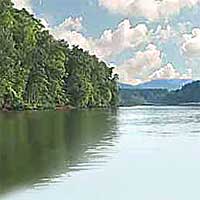 Lake Tillery, a 5,200-acre lake with over 100 miles of shoreline.The biggest draws to fishermen are the giant blue catfish. Fat crappie and plentiful sunfish make this a where everyone can enjoy the "catching"! Fishing from shore is popular, with easy access all around the lake.
Lake Tillery, a 5,200-acre lake with over 100 miles of shoreline.The biggest draws to fishermen are the giant blue catfish. Fat crappie and plentiful sunfish make this a where everyone can enjoy the "catching"! Fishing from shore is popular, with easy access all around the lake.
Primary fish species to catch
Click images for fishing tips and details about each species.
Today's Weather & Forecast
Fishing Boat Rentals
Click here for fishing boat rentals.
Marinas
Click here for marinas.
Public Boat Launch Ramps & Landings
Click here for boat ramps.
Fishing License
Click here for a North Carolina Fishing License.
Map - Fishing & Access
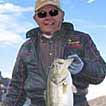 Rick Seaman is a fishing enthusiast with over five decades of fishing experience, a retired tournament fisherman, author of numerous published articles on fishing, and co-author of the book "Bass Fishing - It's not WHAT you throw, It's WHERE you throw it".
Rick Seaman is a fishing enthusiast with over five decades of fishing experience, a retired tournament fisherman, author of numerous published articles on fishing, and co-author of the book "Bass Fishing - It's not WHAT you throw, It's WHERE you throw it".
 Contact Information
Contact Information
Lilly's Bridge Marina
1183 Lillys Bridge Rd
Mt Gilead, NC 27306
910 439-2104
Fishing lakes in each state
111025
Lake Tillery, North Carolina Report
NORTH CAROLINA


Plentiful bass, crappie and perch fishing in central NC.


